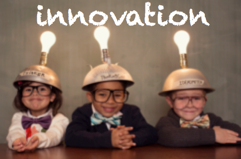 Listening leads to learning, which sets the stage for innovation. Innovation is more likely when employees are well informed about the customer, unafraid to try something new, and committed to the organization’s success.
Listening leads to learning, which sets the stage for innovation. Innovation is more likely when employees are well informed about the customer, unafraid to try something new, and committed to the organization’s success.
Charles Schwab uses multiple methods to listen for customers’ dreams that often start with the phrase, “I know it’s not possible, but I wish…..” Schwab’s top management travels extensively to interact with customers in informal settings. Branches host monthly customer receptions, and at least once a week in different cities. Schwab holds town meetings to hear employees’ ideas, suggestions, and concerns.
Innovation requires deep listening at all levels. Continuing success comes from value-creating innovation stimulated by disciplined listening. Occasional surveys are no enough. Organizations need to build listening systems that capture, summarize, and spread the unmet dreams and unfulfilled wants of multiple customer groups, including existing, prospective, and internal customers (employees).
Listening systems uncover fresh marketplace intelligence, help guide decision making, and nurture creative thinking. They involve both formal and informal methods, conversations with customers, the use of trend data to reveal changing patterns, the distribution of relevant information to all employees, and active discussion and application of findings in work groups.
Gary Hoover, who has created three innovative businesses (Bookstop, Hoover’s Handbooks, and TravelFest) claims that the customers always get what they want. It is just a matter of who gives it to them when. Companies that sustain success continually search for new ways to create value for customers. They choose to lead rather than follow, to act rather than wait, to heed the customer instead of the competitor.
Developing and fostering a continuous, value-based listening system is the solution. LISTENING PAYS!
